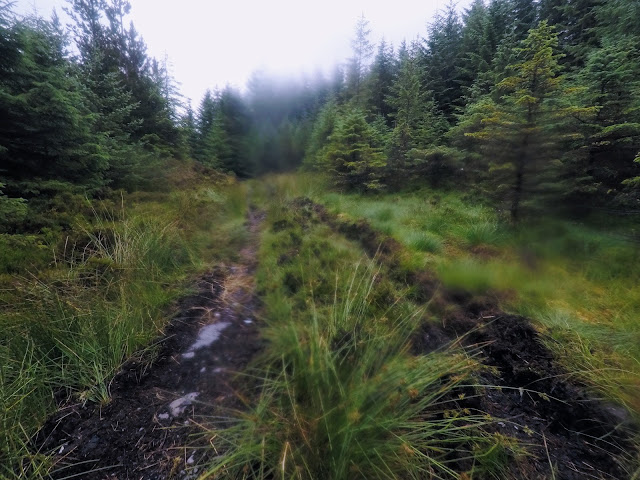Essentially, backpacking… quickly! Packing the bare essentials to survive for the number of days you are out, and moving efficiently, either walking / jogging or running.
I packed with the intention of covering around 25-40km a day for two days, walking and wild camping overnight in relative comfort. This meant packing enough warm clothes to keep moving, but if I got too cold or the weather turned horrific, I would accept having to move faster to generate more heat, change course or put my tent up. My first aid kit was essentially zinc oxide tape and a wound dressing. In case of an emergency I also had shelter, my poles, phone and power pack, and I was never going to be more than 6km or so from a road or building.
The Moelwyns are one of those areas in Snowdonia that around renowned for being boggy, tussocky, hard to navigate through and bereft of visitors. My route started in Betws Y Coed, travelled along the North and Western side of the Lledr over as many summits as possible, crossed at the top of the Crimea Pass, and returned via the Southern and Eastern side. As is usual for most of my solo adventures I had a vague route with plenty of alternative ideas!
Day 1, 36.71km, 2255m, 10hrs
A leisurely departure at 11:15am after quite a lot of faff packing. Today the weather forecast looked good and so despite my later start I knew I could walk until near darkness. Beginning by following the pathways along the Lledr was beautiful, sunlight shining through the trees, perfectly dry forest tracks and few people. At Dolwyddelan it is a steady climb until the Ddear Ddu ridge of Moel Siabod. Pleasant easy scrambling brought me to the high point of my route and from here I undulated along the tops southwards until Cnicht. I met four people along the way, one of whom I knew which was rather suprising, especially on some random sheep trod in the middle of tussocky nowhere!
From Cnicht I had enough daylight to bag one more top, Moelwyn Mawr, before heading North to camp at Llyn Conglog. I didn’t meet anyone else until lunchtime the following day!
Day 2, 25.11km, 942m, 7hrs
 |
| Walking over one of many summits |
 |
| The Crimea Pass on the A470, and the mountains beyond on the left that I would travel over on Day 2 |
 |
| Happy to have finally found a sheep trod to follow, even in the rain |
 |
| The track down from the summit of Y Ro Wen |
 |
| Muddy trails at Bwlch Y Groes |





























